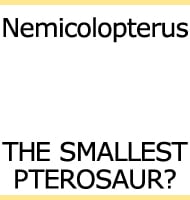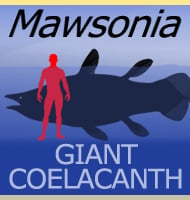In Depth
Although many people are familiar with the dinosaur Oviraptor, what they don’t realise is that its modern day reconstruction of this oviraptorid is often based upon the more abundant remains of Citipati. Named after two beheaded monks who appear in Tibetan buddhist folklore, Citipati is also one of the larger members of its group.
The most remarkable remains show Citipati in can only be described as a nesting posture. It’s thought that the Citipati, and possibly other members of the oviraptoridae, relied upon their covering of feathers to smother their eggs like an insulating blanket, using their arms to increase the area of coverage. This is quite a specialised method of brooding that not only reinforces the link between birds and dinosaurs, but also sits well with the discovery that Oviraptor itself displayed nesting behaviour of its own.
Citipati is connected to the troodontid Byronosaurus because embryos for both dinosaurs have been found in the same nest site. It is uncertain who belonged where or even if one dinosaur had raided the nest of another to provide food for its own young. The idea of nest parasitism has also been put forward, with the Byronosaurus laying its eggs in the nest of a Citipati when it was unattended.
Further Reading
– A theropod dinosaur embryo, and the affinities of the Flaming Cliffs Dinosaur eggs. – Science 266: 779–782. – M. A. Norell, J. M. Clark, D. Dashzeveg, T. Barsbold, L. M. Chiappe, A. R. Davidson, M. C. McKenna & M. J. Novacek – 1994. – A nesting dinosaur. – Nature 378:774-776. – M. A. Norell, J. M. Clark, L. M. Chiappe & D. Dashzeveg – 1995. – An oviraptorid skeleton from the Late Cretaceous of Ukhaa Tolgod, Mongolia, preserved in an avianlike brooding position over an oviraptorid nest. – American Museum Novitates, 3265: 36 pp. – J. M. Clark, M. A. Norell & L. M. Chiappe – 1999. Two new oviraptorids (Theropoda:Ovirapto- rosauria), upper Cretaceous Djadokhta Formation, Ukhaa Tolgod, Mongolia. – Journal of Vertebrate Paleontology 21(2):209-213. – J. M. Clark, M. A. Norell & R. Barsbold – 2001. – Cranial Anatomy of Citipati osmolskae (Theropoda, Oviraptorosauria), and a Reinterpretation of the Holotype of Oviraptor philoceratops. – American Museum Novitates (3364): 1–24. – J. M. Clark, M. A. Norell & T. Rowe – 2002. – A second specimen of Citipati osmolskae associated with a nest of eggs from Ukhaa Tolgod, Omnogov Aimag, Mongolia. – American Museum Novitates (3899): 1–44. – M. A. Norell, A. M. Balanoff, D. E. Barta & G. M. Erickson – 2018.










